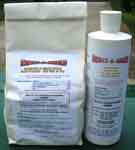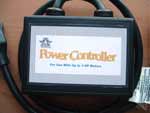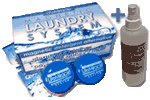The Parts of a Car and How They Move Us
Links and information on this page do not reflect BeFreeTech.com's position - particularly in the area related to hydrogen power. Water has been and can be used as fuel and that would be far more economically advantageous than is indicated on some of the links on the this page, so this page provides grist for the mill and is provided here as counter point.
For most people, little thought is given to the mechanics of a vehicle until there is a problem with how it functions. Other people put a good deal of thought into how cars and other vehicles function, particularly when they are purchasing a new one. The car's engine and how it operates can make a difference when it comes to the comfort of one's ride and in how expensive it will be to refuel it. Drivers have options when it comes to what powers their vehicles, such as electric vehicles versus gas-powered vehicles, for example. For that reason, both men and women should educate themselves about the cars that are currently on the market and how they function.
Electric Cars
Electric cars differ from gasoline-powered automobiles in that they use an electric motor rather than an internal combustion engine. The electric motor receives power from a car battery that is rechargeable. Instead of a gasoline gauge, the car's dashboard shows the car battery's charge state, which like a gasoline gauge reads whether the battery is at full charge, empty, or some state in between. Electric cars also tend to have regenerative braking, which slows the vehicle down by turning its kinetic energy into energy that can recharge the battery.
- Discount Auto Parts in Australia and Overseas
- Bookmarked Links: Computers, Discount Auto Parts for EVs, and More
- Electric Vehicle Categorized Links
- Zero Emissions Resources: Discount Auto Parts and More
- Toyota Prius Hybrid: First Generation
- World Technology Links: Electric Vehicles and Conversions, Solar Technologies, and More
- Electric Vehicles, Cheap Car Parts Online, and Other Resources
Heat Engines and Thermodynamics
To best understand heat engines and how they work, one must understand thermodynamics, particularly the second law of thermodynamics. In thermodynamics, there are three laws. The second law of thermodynamics directly applies to heat engines. In the second law of thermodynamics, heat will naturally flow from an area of higher temperature to an area that has a lower temperature, but it will not naturally flow the other way. With a heat or thermal engine, a heat source is used to produce energy that results in mechanical work or action. It does this through a process in which heat from one section is moved to a cooler section.
- Physics, Communications, Geology, Fitness, and Other Class Resources
- Links Related to Thermodynamics
- Links to Informational, Earth-Related Websites
Gasoline-Powered Vehicles
Cars that run on gasoline use internal combustion engines for propulsion. These engines have a large number of parts that work together to put a vehicle into motion. The primary parts are the cylinder, where gasoline and air are mixed, the piston that compresses the mixture, the spark plug, which ignites it, and the crank shaft, which resets the cycle. The engine itself is serviced by a series of hoses and pipes that cool the engine and provide fuel into the system, among other things. A fuel gauge informs the driver as to how much gasoline the car has left. Gasoline-powered vehicles rely entirely on traditional brakes, which use friction to slow down the car.
Vehicles and Motion
It is important for drivers to understand the relationship between cars and the laws of motion. Newton's first law of motion says that an object in motion will remain in motion unless acted on by an unbalanced force. When it comes to driving, this means that in the event of a collision, a car may be brought to a halt by the impact, but a passenger not using restraints will continue forward, perhaps flying through the windshield in the process. The second law of motion states that force equals mass times acceleration. For drivers, this means that heavier vehicles will require more force to move them forward at a desired speed and that stopping the vehicle will require more opposing force than lighter automobiles. The third law of motion states that every action has an equal and opposite reaction. For cars, this pertains mostly to tires and how they interact with the road. If the roads are too slick, tires cannot push effectively against the road and the car will either skid when trying to stop or turn or not be able to cause motion at all.
- Bartlesville High School: Physics Links for Students
- Seven Categories of Physics Links to Sites Offering Discount Auto Parts and More
- Definition and Information on Perpetual Motion Machines
- All About Perpetual Motion Machines
Additional Learning Materials
- Open Source Ecology Wiki: Suppliers of Discount Auto Parts and More
- Mazda Club: Mazda-Related Articles and Stories
- Automotive and Motorized Equipment: Cheap Car Parts Online
- Photos and Resources: Sprint Cars, Midgets, and Cheap Car Parts Online
- Auto Parts
- Careers in Automotive Collision Repair
- Automobile Parts Recycling
- Parts Specialist Certificate of Proficiency
- Automotive Technology Parts and Service Management
- Collision Repair and Refinishing
- Career Programs and Training: Automotive Technology
- Automotive Collision Repair and Refinishing Academy
- Auto Parts and Batteries, Contract No. GSS11007-AUTO_PARTS
- Learn More About Automotive Technicians
- Automotive Technology With a Subspecialty in Performance Tuning
- Automotive Industry Data Finder: SIC & NAICS Codes
- Auto Parts Solicitation Number: SAQMMA15I0014
- Kirkwood Community College: Automotive Collision Repair
- Auto Mechanics Technology Parts Specialist Certificate of Proficiency (PDF)
- Parts and Service Certificate
- Used Automotive Parts Recyclers Frequently Asked Questions
- Automotive Parts Specialist (AUT117)
- Parts Specialist Certificate to Be Offered at KC
- Class Specification, County of Fairfax, Virginia: Automotive Parts Specialist I (PDF)
- Kalamazoo Valley Automotive Technology Program
- Automotive Technology Program Overview
- Miracosta College Vehicle and Equipment Mechanic (DOCX)

Non Toxic Bug Killer
It's a clean kill for insect pests using this non-toxic, organic powder that's beneficial to humans and pets
Save Power
& Extend Motor Life

Paint on Insulation
Use this amazing Paint-on-Insulation to block thermal transfer far more effectively than Bat insulation
Never Buy Laundry Soap Again
Start saving all the money you have been spending on Laundry Soap. Use our Magnetic Laundry System which is non-polluting, won't damage fabrics, and comes with a Lifetime Warranty
Grow Plants Better and Faster!
With the sounds of nature and organic nutrients, you'll get greater yields, better plant vitality and natural pest resistance.
Tesla Symposium Books
From the former International Tesla Society.